Abstract
Material extracted from the Nichols nonpathogenic strain of Treponema pallidum by phenol-water was analyzed by employing a recently reported colorimetric test for detection of lipopolysaccharide (LPS). The fraction isolated from T. pallidum, in combination with the reagent dye, absorbed maximally at a wavelength in the range reported to be positive for LPS. Comparison of this reaction to that of a commercial preparation of Escherichia coli LPS revealed that time and temperature of incubation of the LPS-dye complexes were important variables which had marked but different effects on the LPS of the two sources. However, with careful control of these parameters, concentration-dependent standard curves were established for LPS of both sources. Our results indicate the cell wall of T. pallidum is similar to that of gram-negative organisms.
Full text
PDF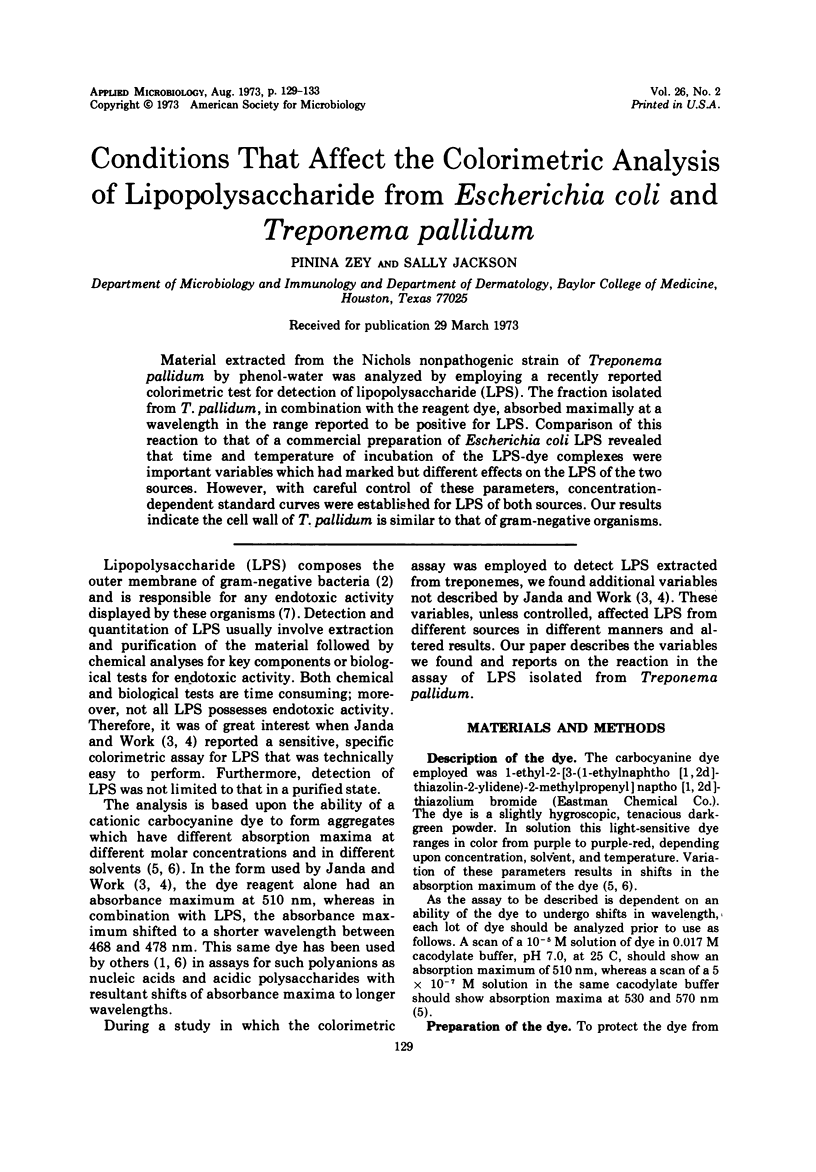
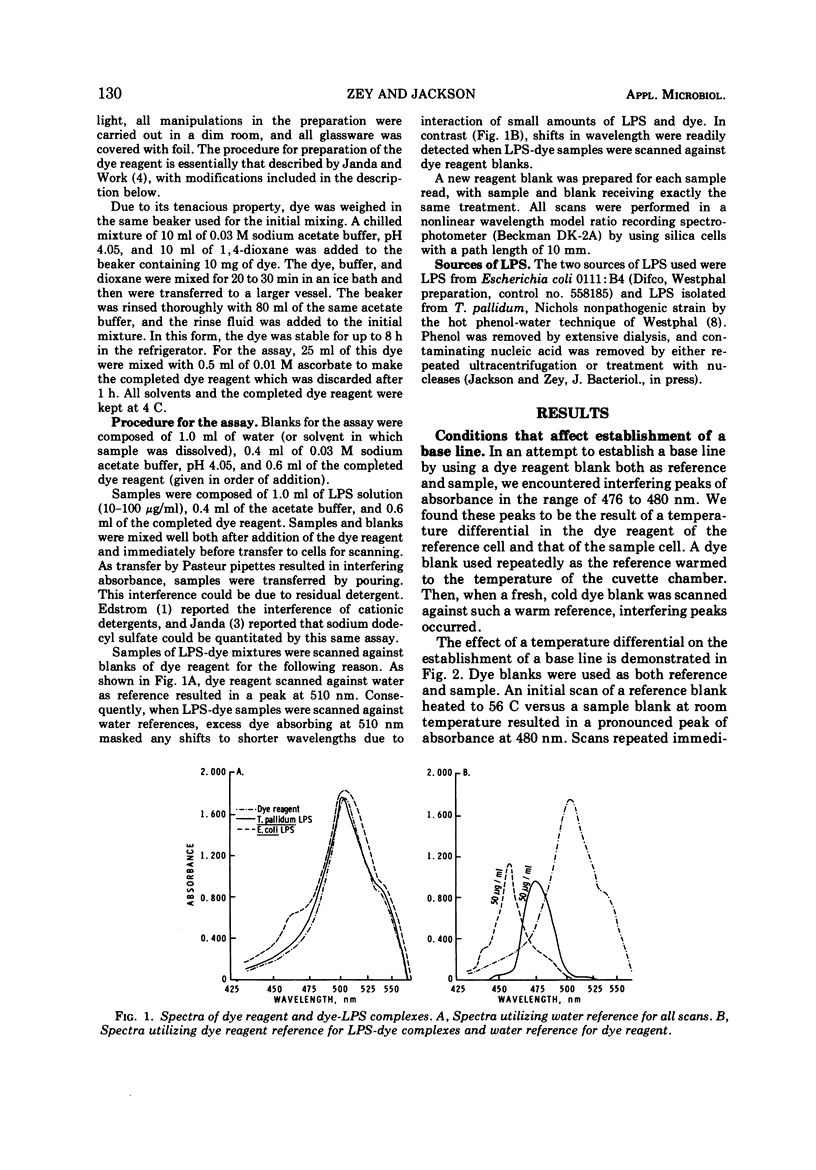
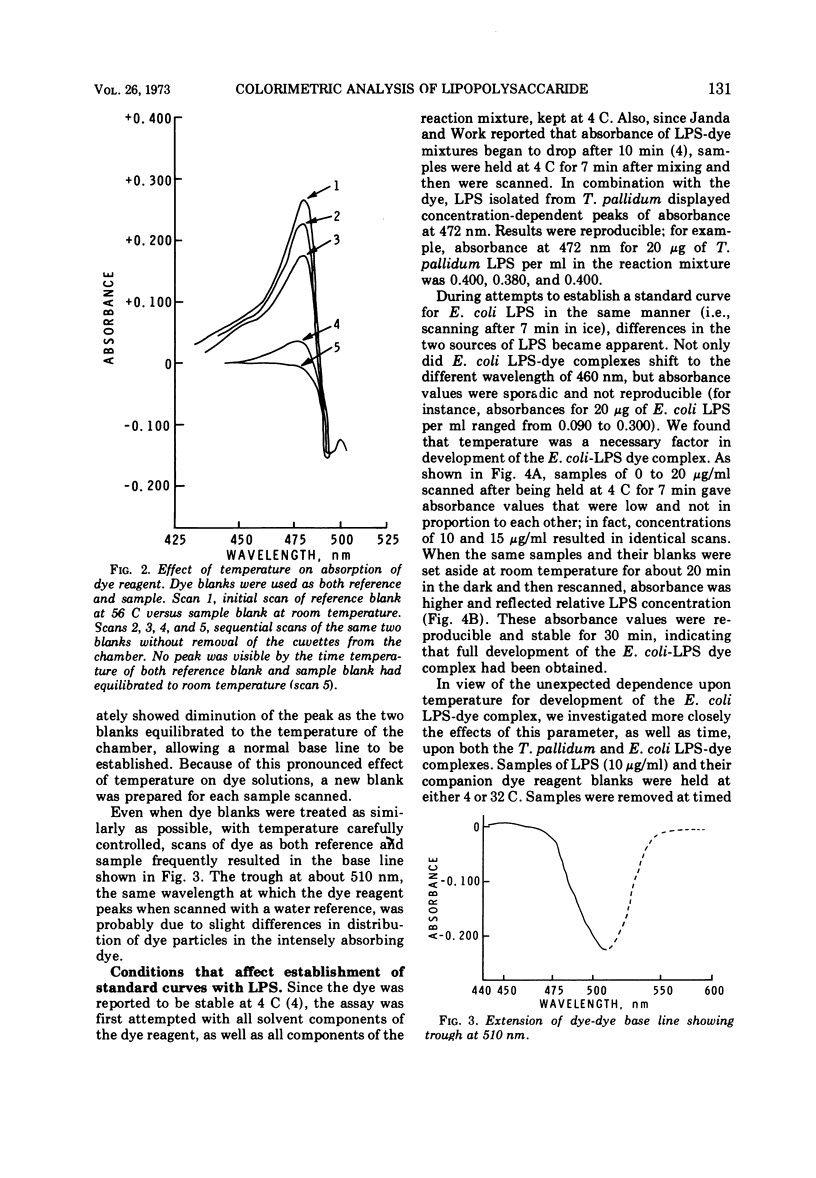
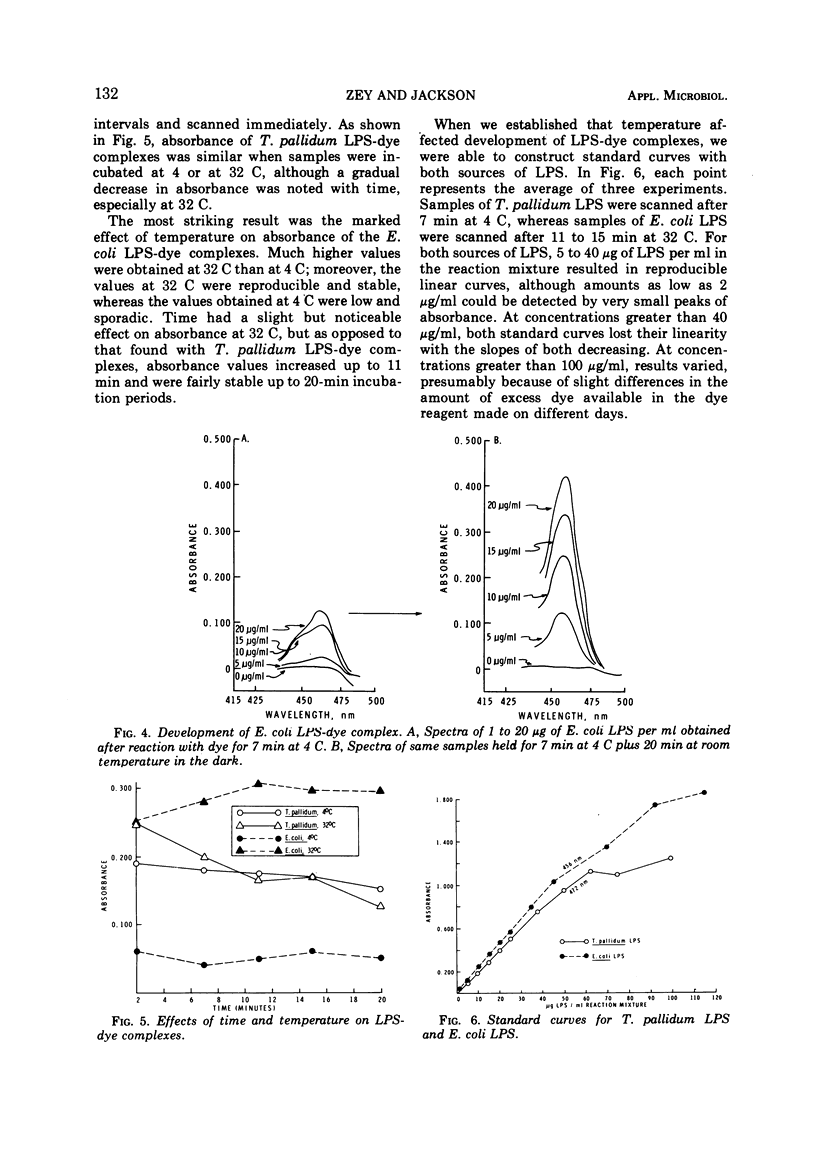
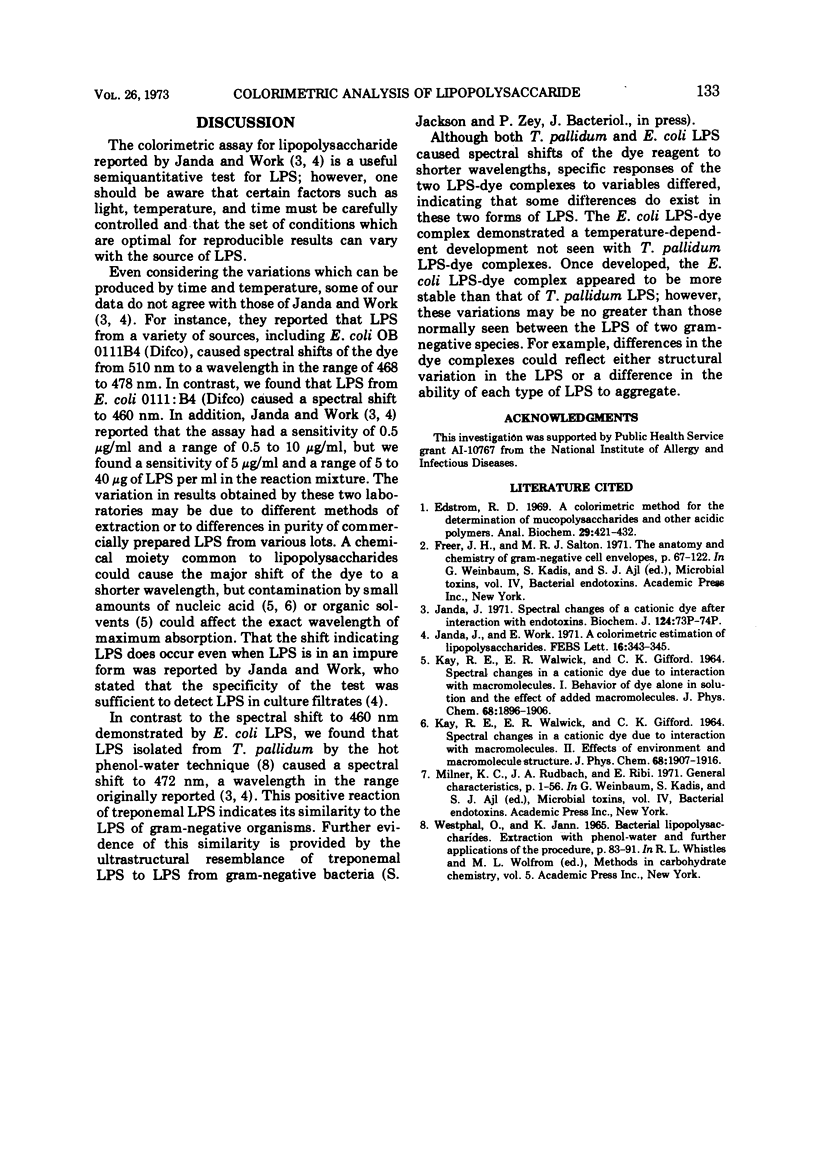
Selected References
These references are in PubMed. This may not be the complete list of references from this article.
- Edstrom R. D. A colorimetric method for the determination of mucopolysaccharides and other acidic polymers. Anal Biochem. 1969 Jun;29(3):421–432. doi: 10.1016/0003-2697(69)90327-3. [DOI] [PubMed] [Google Scholar]
- Janda J. Spectral changes of a cationic dye after interaction with endotoxins. Biochem J. 1971 Oct;124(5):73P–74P. doi: 10.1042/bj1240073pb. [DOI] [PMC free article] [PubMed] [Google Scholar]
- Janda J., Work E. A colorimetric estimation of lipopolysaccharides. FEBS Lett. 1971 Sep 1;16(4):343–345. doi: 10.1016/0014-5793(71)80386-1. [DOI] [PubMed] [Google Scholar]


